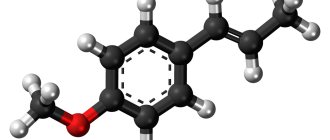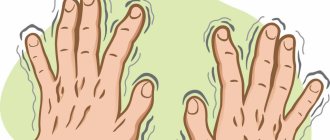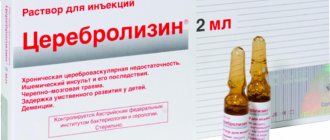general information
Parkinson's disease affects men twice as often as women. In most cases, it develops after 60 years of age, but cases of early onset of the disease are recorded (at 30-40 years of age), as well as juvenile forms that develop in people in their twenties.
There are several hypotheses for the formation of pathology. It has now been precisely proven that one of the mechanisms of its development is the gradual degeneration of neurons and a decrease in the production of dopamine. It is an important neurotransmitter involved in the transmission of nerve impulses. As a result, a specific set of disorders is formed, which makes it easy to make a diagnosis.
Epidemiology
According to a continuous population study, the prevalence of PD in Russia is 139 cases per 100,000 population, the incidence of PD is 16 cases per 100,000 population per year. With increasing age, the risk of PD increases, and the detection rate of PD among people over 65 years of age is already about 1%. Most cases of the disease occur between the ages of 60 and 70 years. However, in 15% of cases, PD debuts before the age of 45 years.
Based on the available data and the age-sex structure of the Russian population, we can roughly estimate the total number of patients with PD in our country at 210 thousand, with the disease occurring in approximately 20 thousand patients each year. Approximate calculations show that at least a quarter of patients (that is, more than 50 thousand) end up outside the scope of medical care, and most of these are patients with an early stage of the disease [3].
Causes
The exact causes of Parkinson's disease have not been identified. Scientists have been able to identify only a number of factors that increase the risk of developing neurodegenerative processes:
- natural processes of aging of the body, accompanied by a decrease in the ability of tissues to regenerate;
- genetic predisposition (this is especially true for forms with early onset);
- chronic lack of vitamin D, which protects neurons from the pathological effects of toxins;
- intoxication with salts of heavy metals, pesticides, alcohol;
- poor environmental conditions in the region of residence;
- taking certain medications (for example, chlorpromazine);
- chronic insufficiency of blood supply to the brain (due to atherosclerosis, osteochondrosis of the cervical spine, etc.);
- infections affecting the central and peripheral nervous system (meningitis, encephalitis, herpes viruses, influenza);
- brain tumors;
- traumatic brain injuries;
- smoking;
- frequent and prolonged stress, chronic fatigue.
Make an appointment
Use of extended-release pramipexole in early PD
The development of new dosage forms of antiparkinsonian drugs that provide them with a prolonged release and allow a single dose during the day not only makes treatment more convenient, but also, by improving patient adherence to treatment, increases the long-term effectiveness of therapy. In addition, with a slow release of the drug throughout the day, a more stable concentration in the blood is achieved, which can ensure better tolerability and effective control of disease symptoms throughout the day (both during the day and at night).
A new dosage form of pramipexole with prolonged (controlled) release, which involves a single dose during the day, has been used in European countries and the USA since 2009, and in our country - since 2012. It is a matrix tablet in which the active substance is evenly distributed in a polymer matrix. In the gastrointestinal tract, the matrix absorbs liquid and turns into a gel, which uniformly releases pramipexole over 24 hours. Since pramipexole is highly soluble in a liquid medium, regardless of its pH, the active substance is released from the matrix and absorbed throughout the intestine. The rate of gastric emptying and intestinal motility do not significantly affect the effect of the drug. Absorption parameters also do not depend on whether the drug is taken on an empty stomach or after a meal [2].
When developing a new dosage form, the possibility of a simple, immediate transition from the traditional form of the drug to the new one was taken into account. The condition for this is that equal daily doses of immediate release (taken 3 times a day) and extended release (taken once a day) have the same antiparkinsonian effect. The difference between the new and traditional dosage forms of pramipexole lies only in the rate of release of the active substance. The half-life of pramipexole is the same when using both forms, but controlled release ensures longer maintenance of therapeutic drug concentrations in the blood [5].
The equivalence of equal daily doses of immediate- and extended-release pramipexole has been demonstrated in a number of clinical trials.
It is worth emphasizing the particular convenience of the new dosage form of pramipexole, which can be taken once a day, for patients with early stage PD who continue to work. To avoid side effects, the drug is prescribed by slow titration - according to the same scheme as the immediate-release drug. For this purpose, extended-release pramipexole tablets are available in several strengths: 0.375, 0.75, 1.5, 3 and 4.5 mg. Treatment begins with a dose of 0.375 mg once a day, then, subject to good tolerance, every 7 days they move to the next dose level until the optimal effect is achieved, up to a maximum of 4.5 mg/day (Table 3). After reaching a dose of 1.5 mg/day, it is sometimes advisable to titrate more slowly, since the development of the full therapeutic effect may require several weeks. The recommended dose for maintenance therapy (both in early and in advanced or late stages of the disease) can range from 0.375 to 4.5 mg/day. The most commonly used dose is 3 mg/day.
Table 3. Titration schedule for extended-release pramipexole.
| A week | Dose |
| 1st | 0.375 mg 1 time per day |
| 2nd | 0.75 mg 1 time per day |
| 3rd | 1.5 mg 1 time per day |
| 4th | 2.25 mg 1 time per day |
| 5th | 3 mg 1 time per day |
| 6th | 3.75 mg 1 time per day |
| 7th | 4.5 mg 1 time per day |
Symptoms
Parkinson's disease is manifested by specific symptoms, which together form a clear picture of the disease:
- tremor: fine trembling begins in one hand and then spreads to both limbs and head; the movement of the fingers is somewhat reminiscent of counting coins; while performing purposeful movements (for example, while working at a computer);
- general slowness of movements (bradykinesia): the patient often freezes in one position;
- specific gait: a person moves with small, shuffling steps, as if he is constantly on very slippery ice;
- poor facial expressions: a mask effect is formed due to low mobility of facial muscles;
- monotonous, quiet speech;
- increased muscle tone (muscle rigidity): the figure becomes stooped, arms and legs are slightly bent, the head is tilted forward;
- postural instability: a person has difficulty starting and ending movements, resulting in decreased ability to maintain balance;
- disorders of the autonomic nervous system: oily skin, excessive secretion of saliva and sweat;
- decreased sense of smell;
- constipation, urinary disorders.
Unlike other neurodegenerative diseases, Parkinson's disease has little effect on intelligence in early and middle stages of development. As the pathology progresses, there is a decrease in the speed of thinking and speaking, decreased mood, depression and indifference to everything that happens.
How the disease develops
There are five main stages in the development of Parkinson's disease.
- First. The disease is expressed by weak tremors of the limbs. This condition does not prevent a person from leading a full, normal lifestyle, but in some cases he may experience discomfort.
- Second. Trembling of hands and feet increases. In the second stage, the patient is still able to lead a normal life, but with minor restrictions.
- Third. Against the background of progressive symptoms, severe tremor is noted, and the patient experiences loss of coordination in space. But even in this state, a person does not lose the skill of self-care, despite the fact that his movements slow down significantly and he quickly gets tired.
- Fourth. Serious motor and speech disturbances are noted. The patient can only partially take care of himself, so he needs help from outsiders. At the fourth stage of the disease, damage to the facial muscles occurs, which leads to loss of facial expressions. Also at this stage, problems with the bladder may appear.
- The sick person experiences complete loss of movement. The fifth stage is characterized by the rapid development of such deviations as memory impairment. The patient may experience hallucinations. A patient in this condition requires constant care. It is best for such a patient to be hospitalized.
Parkinson's disease is a progressive disease, so the transition from one form to another occurs quite quickly. In each individual case, it depends on the individual characteristics of the patient’s body. The degrees of development of the disease also vary:
- the disease remains at one stage for a long time: sometimes there is no progression for more than 10 years;
- a moderate pace of development is characterized by a transition to a new stage within 5 years;
- rapid transition to a more severe form, which occurs over 1.5-2 years.
Thanks to modern techniques, treatment and care for Parkinson's disease helps to significantly slow down the progression of the disease. Experienced doctors are able to identify possible deviations, which also makes therapy more effective.
Stages of development
Currently, doctors distinguish 5 stages of Parkinson's disease, manifested by a certain set of symptoms:
- Stage 0: no clinical manifestations;
- Stage 1: there are slight difficulties in moving one arm, a slight tremor, first with excitement, then at rest; the sense of smell and sleep are disrupted, fatigue and apathy appear;
- Stage 2: disturbances involve the second hand, trembling of the tongue and lower jaw appears; salivation; hypokinesia is formed; the ability to self-care is preserved;
- Stage 3: stiffness and impoverishment of movements increases, facial expressions are almost absent; a specific gait and posture is formed; during a conversation, the patient begins to get stuck on the same word; self-care is difficult, but possible;
- Stage 4: postural instability develops, the patient begins to fall frequently; the intellect begins to suffer, depression increases; At this time, suicide attempts are common; a person needs help to perform simple actions;
- Stage 5: manifestations reach their climax, the person cannot sit down, stand up and walk independently, eating is difficult due to swallowing disorders; loss of control over bowel movements and urination; the patient requires constant care.
Diagnostics
The diagnosis of Parkinson's disease is made based on the characteristic clinical picture. The patient is examined by a neurologist who notes typical signs. Complaints must be clarified and an anamnesis of the disease (history of the appearance of symptoms) and life history (information about previous injuries, chronic diseases, surgical interventions) is collected. Laboratory and instrumental diagnostics are used to clarify concomitant pathology and exclude other causes of neurological disorders.
Treatment of Parkinson's disease
At the moment, successfully selected treatment for Parkinson's disease can stop the process of degradation and reduce the severity of pathological symptoms. The disease begins to progress more slowly, which allows patients to stay in good shape longer.
Drug treatment
Drug treatment is aimed at restoring the balance of dopamine in the central nervous system. The following drugs are used:
- Levodopa and its analogues: serve as the basis for the production of dopamine;
- dopamine receptor agonists: stimulate receptors similar to a natural neurotransmitter and reduce the severity of symptoms;
- MAO-B inhibitors: reduce the breakdown of dopamine;
- COMT inhibitors: prescribed in combination with levodopa and reduce its breakdown;
- anticholinergics: aimed at reducing symptoms.
There are combination products that combine several active ingredients for the fastest possible effect.
Non-drug treatment
Drug treatment is complemented by physiotherapy, exercise therapy and massage. Physiotherapy is used to activate metabolic processes and increase blood flow in the brain. Depending on the patient’s condition and concomitant diseases, the following may be prescribed:
- magnetic therapy;
- ultrasound stimulation;
- electrosleep;
- mineral baths;
- acupuncture.
The massage is aimed at improving motor activity. Intensive muscle kneading and passive gymnastics reduce muscle stiffness and have a general strengthening effect.
Physical therapy exercises allow you to:
- reduce muscle stiffness and strengthen it;
- increase sense of balance;
- improve the patient's emotional state.
Most exercises are aimed at training the sense of balance. The complex is selected individually depending on the patient’s condition, age and concomitant diseases.
Surgery
The help of surgeons is relevant in the last stages of the disease. The most effective and safest operation is the installation of a brain stimulator. The intervention does not require opening the skull. Thin electrodes are inserted into the brain and a small stimulator is placed under the skin of the collarbone. The device is programmed for a specific pulse frequency; in addition, the patient and his relatives can change the settings depending on the condition. Using a stimulant allows you to reduce the dosage of medications and keep symptoms under control for a long time.
Other surgical treatment options require working on an open brain:
- thalamotomy: destruction of part of the thalamus, allowing to get rid of tremors, but maintaining other symptoms;
- pallidotomy: partial removal of one area of the brain (globus pallidus), significantly reducing all the main symptoms of the pathology.
Parkinson's disease (PD) is a “24 hour disease” and symptoms occur at night, i.e. from the moment the patient goes to sleep until the moment the patient wakes up and gets out of bed, are an integral part of the clinical picture of the disease [4]. Virtually all patients with PD exhibit symptoms that occur at night, leading to sleep disturbances and significantly worsening quality of life [4, 6, 14]. Among them, motor and non-motor symptoms are distinguished [6, 18, 19].
To motor night symptoms
include nocturnal akinesia and akathisia, cramps, nocturnal dystonia, restless legs syndrome (RLS), periodic limb movements and psychomotor agitation during sleep. Akinesia (hypokinesia) is a decrease in spontaneous motor activity and is detected in 65% of patients with PD [6, 14, 18]. Some patients experience a feeling of restlessness in the evening and at night, forcing them to move (nocturnal akathisia). Akathisia often occurs in patients with motor fluctuations caused by long-term use of levodopa, often during the cessation of the next dose, or during the onset and cessation of its effect (a type of biphasic dyskinesia) [6, 18].
In 20% of patients with PD, cramps occur at night - painful involuntary muscle spasms, often in the muscles of the legs and feet, less often in the biceps brachii or extensor muscles of the fingers, lasting from several seconds to several minutes. In most cases, cramps are observed at rest; they can be triggered by intense physical activity, alcohol intake, lack of sleep, smoking, hypothermia or overheating, and water-electrolyte imbalance [6, 18].
In 10% of patients with PD, nocturnal myoclonus is detected - short-term muscle twitching, usually during slow-wave sleep during long-term treatment with levodopa, more often in patients with daytime dyskinesias [18].
Restless legs syndrome (RLS) is characterized by unpleasant sensations in the lower extremities at rest in the evening and at night, forcing the patient to make movements that eliminate them and leading to sleep disturbances. RLS is detected in 6.3-19.5% of patients with PD [4, 18]. Sleep disturbances in RLS are aggravated by periodic limb movements (PLM), which occur during sleep in 80% of patients with RLS during the slow-wave sleep phase. The lower extremities are predominantly involved, with extension of the big toe and dorsiflexion of the foot and lower leg occurring. Unlike myoclonus, MDCs last a longer time (from 0.5 to 5 s), can be unilateral and are rhythmically repeated every 4-90 s. They are usually observed in the first half of the night and increase with age. In mild cases, neither patients nor their relatives suspect the presence of PDC, and they can only be detected using polysomnography. In severe cases, PDCs do not stop throughout the night and can cause frequent awakenings [3, 20, 21].
Nocturnal drug-induced dyskinesias are motor symptoms of PD. More often they are represented by choreiform hyperkinesis, oromandibular dyskinesia, less often - myoclonus, tics. Off period night dystonia is often painful and significantly disrupts sleep.
Motor activity during the rapid eye movement (REM) sleep phase is detected in approximately 20% of patients. Psychomotor agitation in REM sleep can manifest itself as stuporous talking, screaming, moaning, elementary or more complex movements of the limbs and torso, sometimes very active and fraught with the risk of injury to the patient or a relative lying next to him. Sometimes the symptom appears several months or years before the main motor symptoms of PD and can be considered as the first sign of the disease [6, 18].
Non-motor night symptoms
represented by sleep disorders, autonomic disorders, affective and psychotic disorders. Sleep disturbances are one of the most significant non-motor symptoms of PD. Virtually all patients with PD suffer from various types of such disorders (difficulty falling asleep, shallow sleep with frequent awakenings at night, early awakening and the closely related excessive daytime sleepiness). In 1817, D. Parkinson noted that sleep disturbances were an important component of shaking palsy. Most often, daytime sleepiness is caused by disturbances in nighttime sleep, in turn disrupting nighttime sleep and completing a vicious circle. Daytime sleepiness in patients with PD can be caused by medications, depression, sleep apnea, or progression of the disease itself.
In addition to the main motor disorders in PD, there are autonomic disorders, which are more pronounced in the later stages of the disease, along with motor, cognitive and affective disorders, which are an integral part of the clinical picture of the disease. However, they never come to the fore in the clinical picture, although in the later stages of the disease they are usually quite pronounced. These include intestinal motility disorders with a tendency to constipation, impotence, orthostatic hypotension, seborrhea, weight loss, pain, panic attacks, hyperhidrosis, and urinary disorders. Autonomic disorders at night are represented by urinary disorders (nocturia, bedwetting), hyperhidrosis and panic attacks at night. The most socially maladaptive autonomic disorder is urination disorder, which develops with the progression of PD in 60-80% of cases and is mainly represented by overactive bladder syndrome. Panic attacks are psychovegetative paroxysms, more often occurring against the background of severe anxiety disorders and characterized by mental, vegetative and somatic symptoms, including fear of death, shortness of breath, profuse sweating, chest pain, dizziness, tachycardia, chill-like tremor. Sleep panic attacks have a relatively shorter duration, pronounced phobic and psychosensory manifestations and are predominantly characterized by rare paroxysms. Patients with sleep panic attacks are characterized by more pronounced anxiety, deterioration in quality of life and excessive autonomic activation in terms of heart rate, systolic blood pressure, respiratory rate and galvanic skin activity.
Affective disorders in patients with PD manifest themselves in the form of depression, apathy, and less commonly, manic syndrome. One of their most common variants is depression, which is detected at any stage of PD, but in 30% of cases precedes its first motor manifestations. A significant proportion of patients with PD experience increased anxiety, irritability, emotional lability and negativism.
Mental disorders are also possible at any stage of PD; in 50-60% of cases in the later stages they develop spontaneously, but are more often associated with the action of antiparkinsonian drugs, when a new drug is prescribed, or when the dose is increased or the regimen of a previously prescribed drug is changed. The spectrum of mental disorders observed in PD is very wide and may include psychotic states with hallucinations, illusions, delusions and delirium. A kind of equivalent of psychotic disorders are vivid, frightening dreams and nightmares, which often precede or accompany more obvious psychotic disorders.
Over the past few decades, two-component drugs containing levodopa and a peripheral DOPA decarboxylase inhibitor (DDC), which causes inhibition of peripheral decarboxylation of levodopa, have been used to treat patients with PD. Since 2003, a three-component drug, stalevo, containing levodopa, carbidopa and the catechol-O-methyltransferase inhibitor entacapone has been used for the treatment of PD [2] (Table 1)
.
The main reasons for the development of motor fluctuations, including nocturnal akinesia in PD, are fluctuations in the concentration of levodopa in the blood plasma due to the short half-life of two-component drugs (levodopa/DDC inhibitor), which in turn is associated with pulsatile non-physiological stimulation of dopamine receptors.
The use of a new generation three-component levodopa drug, Stalevo (levodopa/carbidopa/entacapone), allows for a more uniform concentration of levodopa in the blood plasma, which ensures a more constant stimulation of dopamine receptors, close to physiological conditions.
The advantages of the drug Stalevo include higher bioavailability of levodopa, prolongation of the half-life of levodopa in the blood to 85%, a more stable and higher concentration of levodopa in the blood, prolongation of the duration of action of each dose of levodopa taken. Levodopa in the composition of Stalevo is deprived of its main drawback - a short half-life in plasma, which determines the pulsatile stimulation of dopamine receptors in the striatum. Thus, the combination of levodopa with carbidopa and entacapone, which is part of Stalevo, may provide a more physiological tonic activation of dopamine receptors [13, 15].
A pharmacokinetic study of the bioavailability of a single 200 mg dose of levodopa/carbidopa/entacapone triplet administered at bedtime showed that plasma levodopa concentrations were more stable after administration of the triple formulation than after administration of 200 mg sustained-release levodopa [12].
The objective of this study was to study the effectiveness of the new three-component drug levodopa stalevo in the correction of nocturnal motor symptoms of the disease when taking a single evening dose.
Material and methods
73 patients with PD were examined at the Center for Extrapyramidal Diseases.
During the study, patients with PD were divided into two groups. The main group included 53 PD patients with nocturnal symptoms, the comparison group consisted of 20 PD patients without symptoms that manifested themselves at night. To study the frequency and nature of nighttime symptoms, a control group of 10 practically healthy people of the appropriate age was selected. All three groups were comparable by gender and age. In the study group, the correction of nighttime symptoms of PD was individualized as much as possible. For each patient, the spectrum of night symptoms was determined and, depending on their nature, dopaminergic therapy was corrected using the three-component drug levodopa stalevo; In 63 PD patients with nocturnal symptoms, evening levodopa was replaced by Stalevo at a dose equivalent to the dose of levodopa that the patient took as part of the two-component drug. Patients took Stalevo once before bedtime for 3 months.
In the main group, patients with a severity of the disease of 3-3.5 points and an akinetic-rigid form of PD predominated, and in the comparison group - with a severity of 2-2.5 points and a mixed form of the disease. The severity of PD was determined using the modified Hoehn-Yahr scale [10]; motor disorders - using the UPDRS quantitative scale (Part III) [7]. The dynamics of daily activity were assessed using the Schwab and England and UPDRS scales (Part II). The severity of affective disorders was determined using the Hamilton anxiety [9] and Hamilton depression scales [8].
The quality of life of patients with PD was studied using the quality of life questionnaire for patients with PD PDQ - 39 [16, 17]. Sleep disturbances were assessed using the Parkinson's Disease Sleep Scale [5] and the Epworth Sleepiness Scale [1, 11]. The severity of night symptoms was assessed using a scale for a comprehensive assessment of factors that disrupt sleep in PD, developed at the Department of Neurology of the Russian Medical Academy of Postgraduate Education, at the Center for Extrapyramidal Diseases. In order to more objectively assess the nature and severity of motor, non-motor and pharmacological factors that disrupt sleep in PD, as well as determine the effectiveness of antiparkinsonian therapy, a scale for a comprehensive assessment of factors that disrupt sleep in PD was developed, which allows assessing the 16 most common motor, non-motor and pharmacological factors. factors (complications of inadequate pharmacotherapy).
Motor factors included nocturnal akinesia, the incidence of which was 41.7%, cramps - 30.1%, nocturnal akathisia - 7.7%, RLS - 5.8%, PDC - 3.8%. Non-motor factors included nocturia, which was detected in 71.8%, affective disorders - 52.4%, bedwetting - 23.3% and hyperhidrosis - 8.7%, as well as panic attacks of the night - 0.9%. Pharmacological factors included excessive daytime sleepiness, the incidence of which was 62.2%, muscular dystonia - 23.3% and psychotic disorders such as nightmares - 20.3%, hallucinations - 8.7%, psychomotor agitation during sleep - 8.7%, illusions of perception - 3.8%. The same patient usually experienced a combination of several nocturnal symptoms of PD.
Patients included in the study were not subject to round-the-clock monitoring by medical personnel and polysomnographic monitoring during night sleep. A thorough survey of patients, relatives, caring staff sleeping in the same room with the patient, as well as the use of modern scales made it possible to obtain objective data.
Statistical analysis was carried out using the Statistica 6 software package.
Results and discussion
The most common nocturnal symptoms of PD in the examined patients were nocturia (71.8%), affective disorders (52.4%), akinesia (41.7%) and cramps (30.1%). Daytime sleepiness was also noted (62.2%). A correlation was found between the severity of night symptoms and the clinical form of PD ( r
= –0.4;
p
<0.001), as well as the severity of PD according to Hoehn-Yahr (
r
=0.5;
p
<0.05). Nighttime symptoms were more pronounced in the akinetic-rigid form, with a greater degree of severity and a faster rate of progression of PD. They most often appeared at stage 3-3.5 (according to Hoehn-Yahr) and usually debuted in the 6-9th year of the disease.
After correction of nocturnal motor symptoms of PD in the study group, there was a significant decrease in their severity ( p
<0.05), determined by a scale for a comprehensive assessment of factors that disrupt sleep in PD
(Table 2)
.
The dynamics of the severity of sleep disorders in the main group before and after correction of night symptoms are presented in Table. 3
.
Thus, a statistically significant decrease in the severity of nighttime symptoms of PD, including sleep disturbances, was revealed in the main group after their correction ( p
<0.0001). Improvement was observed in 28.4% of patients.
The severity of daytime sleepiness according to the Epworth scale in the main group after correction of nighttime PD symptoms decreased from 9.3±3.9 to 7.2±2.6 points ( p
<0,001).
The severity of emotional disturbances according to the Hamilton depression and anxiety scales after correction of nighttime motor symptoms of PD decreased by 28% (Table 4)
.
In 33.1% of patients of the main group, it was significant (by 33.1%) ( p
<0.001) after correction of nighttime PD symptoms, daily activity scores on the Schwab and England scale improved - they increased from 59.8±10.4 to 79.6±10.5 points.
According to the PDQ-39 quality of life questionnaire, after correction of nighttime symptoms of PD, positive dynamics of quality of life indicators was also observed in patients of the main group. Thus, before correction, the PDQ-39 score was 67.4±24.4 points, after correction - 51.3±27.1 points (improvement by 24%, p
<0,001).
Thus, in the main group of patients with PD, after correction of nocturnal motor symptoms with the three-component drug Stalevo, there was a significant improvement in quality of life indicators according to the PDQ-39 quality of life questionnaire ( p
<0.001), allowing us to conclude that nocturnal symptoms significantly worsen the quality of life of patients with PD.
Thus, the results of the study indicate the need for diagnosis, assessment of the severity and complex treatment of a wide range of nocturnal symptoms found in patients with PD, which can significantly improve indicators of quality of life and daily activity. The severity of night symptoms depends on the clinical form, severity and rate of progression of PD. Night symptoms most often appeared in advanced stages of PD and in the 6-9th year of the disease. Among PD patients with an akinetic-rigid form of the disease and a faster rate of progression, nocturnal symptoms are much more common and most pronounced. The presence of nighttime symptoms in the clinical picture of PD significantly increases the severity of emotional disturbances.
A wide range of night symptoms and their combinations in patients with PD requires an individual approach to corrective therapy. Administration of the three-component drug Stalevo once before bedtime for 3 months to patients with nocturnal symptoms of PD led to a statistically significant decrease in their severity, which made it possible to significantly reduce emotional disorders, as well as improve indicators of daily activity and quality of life of patients with PD.
Complications
Restriction of muscle function in Parkinson's disease inevitably leads to a decrease in the intensity of blood flow and a decrease in the level of metabolism. Already in the middle stages of the development of the disease, the risk of blood clots and the development of dangerous conditions increases significantly:
- ischemic or hemorrhagic stroke;
- myocardial infarction, angina pectoris, heart failure;
- pulmonary embolism.
Bedridden patients often face severe complications associated with a recumbent position:
- congestive pneumonia;
- aspiration pneumonia (due to impaired swallowing, food enters the respiratory tract);
- bedsore infection and sepsis.
Most patients experience apathy and severe depression, which lead to suicidal thoughts. Some patients carry out plans and commit suicide.
Correctly selected treatment significantly reduces the risk of complications, which is why it is important to consult a doctor in a timely manner.
results
Qian and colleagues found that depletion of PTB1 in astrocytes stimulates their transformation into neurons. The outcome of this transformation depends on the region of the brain in which the target astrocytes are located. Astrocytes in the midbrain were found to synthesize low levels of the transcription factors Lmx1a and Foxa2. These factors are markers of dopaminergic neuron precursors during midbrain development. However, depletion of PTB1 protein increased the production of these transcription factors in midbrain astrocytes. On the other hand, exposure to cortical astrocytes led to an increase in the synthesis of transcription factors characteristic of cortical neurons.
After 4 weeks of exposure to astrocytes in vitro, 50–80% of the cells became morphologically neuron-like and tested positive for the neuronal markers TUJ1 and MAP2.
In in vivo experiments, 3 weeks after shPTB administration, about 20% of cells that received red fluorescent protein synthesized the neuronal marker NeuN. After 10 weeks, there were already about 80% of cells with NeuN. At the same time, the cells stopped producing GFAP, a protein present in astrocytes.
After 12 weeks, 30–35% of these cells had transformed into dopaminergic neurons. In other words, reprogramming astrocytes helped restore more than 600 dead dopaminergic neurons (Figure 4).
Figure 4. Brain of a mouse with “unilateral” Parkinson's disease. Above - before reprogramming using shPTB. Below - after. Dopaminergic neurons are shown in green.
One-Time Treatment Generates New Neurons, Eliminates Parkinson's Disease in Mice
Moreover, the newly created neurons began to actively produce dopamine. Exposure to 6-OHDA reduced neurotransmitter levels to 25% of normal levels. After therapy, dopamine concentrations rose to 65% of normal levels.
Prevention
Prevention of Parkinson's disease includes:
- proper nutrition with a minimum amount of preservatives and artificial additives, a sufficient amount of vitamin D, omega-3, antioxidants;
- regular physical activity to prevent physical inactivity;
- adequate sleep of at least 8 hours a day, adherence to a work and rest schedule;
- minimizing stress and fatigue;
- quitting smoking and drinking alcohol;
- regular medical examinations, compliance with all doctor’s recommendations;
- timely contact a specialist if any suspicious symptoms appear.
Make an appointment
Treatment at the Energy of Health clinic
Neurologists at the Energy of Health clinic will come to the rescue at any stage of Parkinson’s disease. We offer comprehensive treatment in accordance with modern standards:
- selection of drug therapy;
- physiotherapeutic procedures: magnetotherapy, laser treatment, etc.;
- therapeutic massage courses;
- Exercise therapy directly in the clinic;
- training in physical exercises for exercise at home;
- organization of sanatorium-resort treatment if indicated;
- training relatives in the rules of caring for the sick;
- work with a psychologist and psychiatrist if necessary.
Advantages of the clinic
The Health Energy Clinic has experienced doctors, skilled nurses and modern equipment for diagnosing and treating various diseases. We offer:
- diagnostics using instrumental, functional and laboratory studies;
- consultations with experienced specialists in various fields;
- obtaining the opinion of foreign colleagues if necessary;
- individual selection of treatment;
- complex therapeutic regimens using medications, physiotherapy and other methods;
- extensive screening programs for early diagnosis of diseases;
- detailed consultations on disease prevention;
- any certificates and conclusions.
Parkinson's disease begins very slowly, but it is almost impossible to stop the process. If you or your family have suspicious signs, do not delay contacting a doctor. Sign up for diagnostics at the Energy of Health clinic.










